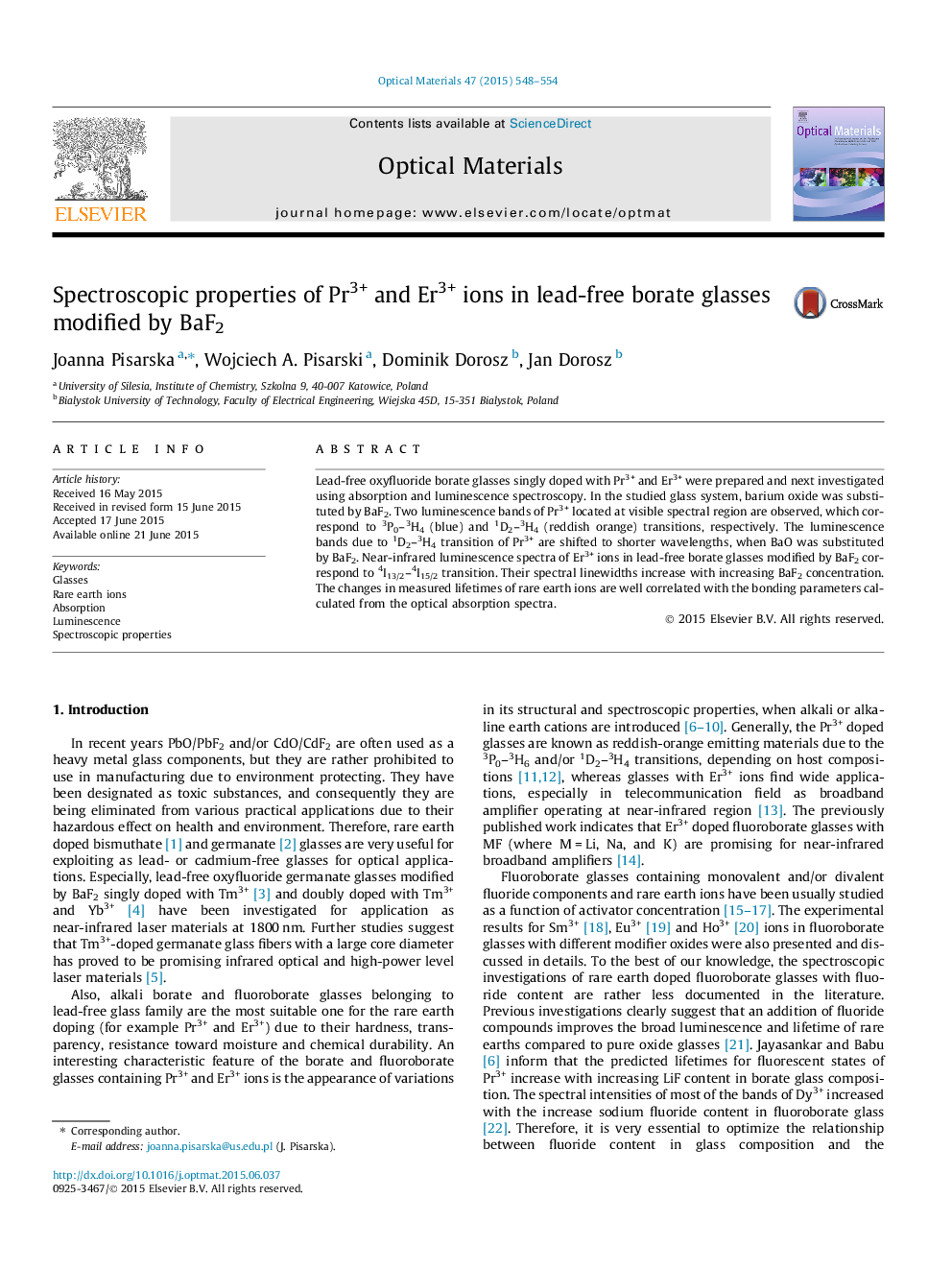| Article ID | Journal | Published Year | Pages | File Type |
|---|---|---|---|---|
| 1493754 | Optical Materials | 2015 | 7 Pages |
•Rare earth doped lead-free borate glasses modified by BaF2 were prepared.•Emission spectra are due to 3P0–3H4, 1D2–3H4 (Pr3+) and 4I13/2–4I15/2 (Er3+) transitions.•Emission bands of Pr3+ are shifted to shorter wavelengths with increasing BaF2 content.•Spectral linewidths for 4I13/2–4I15/2 transition of Er3+ increase with increasing BaF2 content.•Measured lifetimes of Pr3+ and Er3+ are well correlated with calculated bonding parameters.
Lead-free oxyfluoride borate glasses singly doped with Pr3+ and Er3+ were prepared and next investigated using absorption and luminescence spectroscopy. In the studied glass system, barium oxide was substituted by BaF2. Two luminescence bands of Pr3+ located at visible spectral region are observed, which correspond to 3P0–3H4 (blue) and 1D2–3H4 (reddish orange) transitions, respectively. The luminescence bands due to 1D2–3H4 transition of Pr3+ are shifted to shorter wavelengths, when BaO was substituted by BaF2. Near-infrared luminescence spectra of Er3+ ions in lead-free borate glasses modified by BaF2 correspond to 4I13/2–4I15/2 transition. Their spectral linewidths increase with increasing BaF2 concentration. The changes in measured lifetimes of rare earth ions are well correlated with the bonding parameters calculated from the optical absorption spectra.
